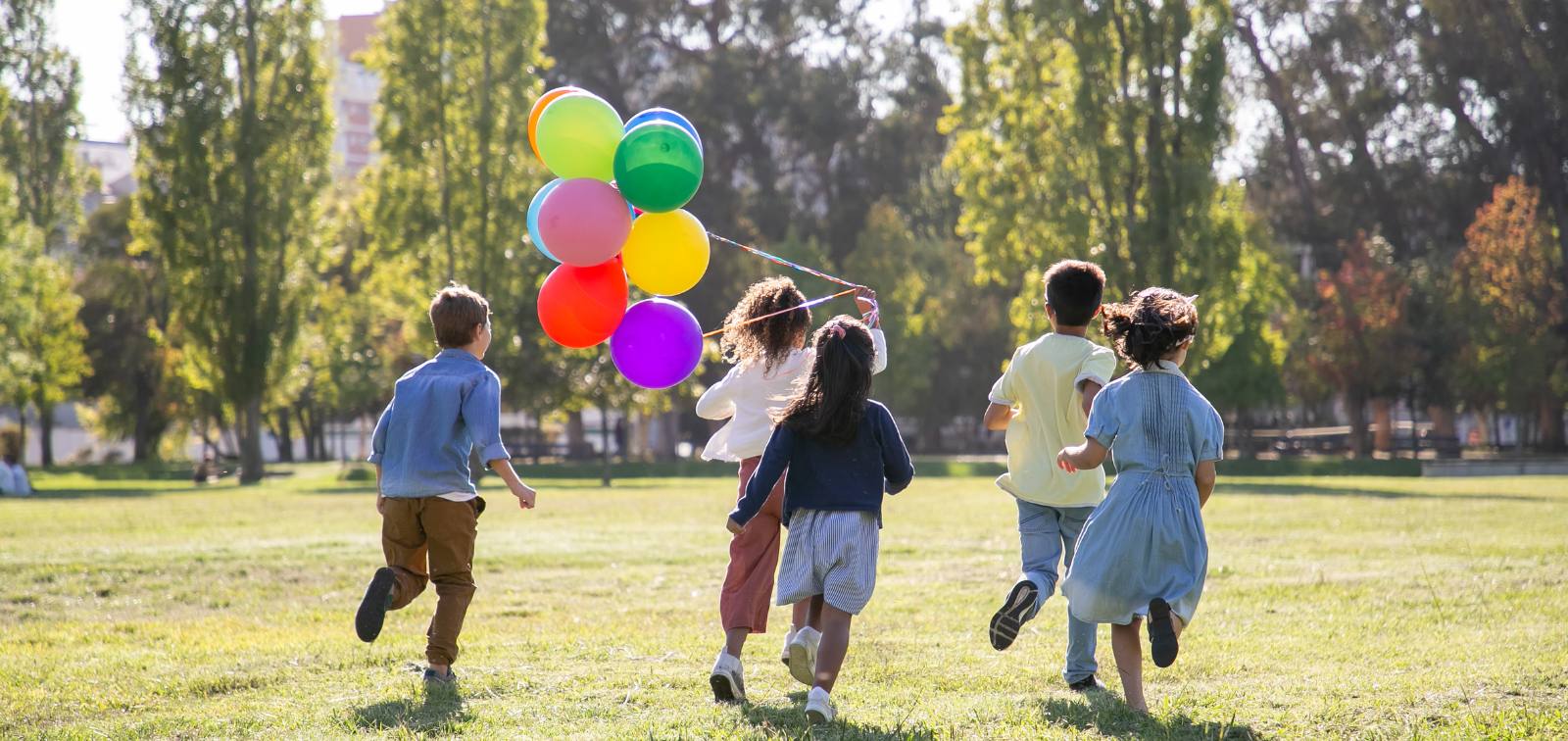Children Living in Greener Neighbourhoods Show Better Lung Function
A meta-analysis with 35,000 children from 8 European countries underscores the link between green urban spaces and respiratory health in childhood
17.07.2024
A large study of 35,000 children from eight countries has found a "robust" link between exposure to green spaces in early childhood and better lung function. The study, led by the Barcelona Institute for Global Health (ISGlobal), has been published in Environment International.
The research used data from 10 European birth cohorts from 8 countries (Denmark, France, Italy, Lithuania, Norway, the Netherlands, Spain and the UK) to conduct a meta-analysis. This assessment of the data was done at the individual level for each participant.
Data on exposure to green spaces were available from two different points in time: pregnancy and childhood (from 3 to 12 years of age). As a proxy for residential green space, the research team used the Normalised Difference Vegetation Index (NDVI) in a 300m buffer around the participant's address. NDVI is an index that uses satellite images to estimate the amount of vegetation at a given point.
Lung function was measured using spirometry tests. To assess lung volume, the researchers measured forced vital capacity (FVC), which is the maximum amount of air a person can breathe out without a time limit after taking a deep breath. And as an indicator of how open the airways are, forced expiratory volume in one second (FEV1) was taken. FEV1 is the volume of air exhaled in the first second of forced breathing after a deep inhalation.
Statistical analysis showed that children living in greener neighbourhoods had better lung function, specifically higher FVC and FEV1. On the contrary, those who lived further away from green spaces had a lower lung volume (FVC).
While the positive association of living in greener neighbourhoods with lung function was observed regardless of socioeconomic status, the effect was stronger in children from higher socioeconomic backgrounds. “One possible explanation could be that families with higher education or income may have access to higher-quality, safer, and better-maintained green areas" says Amanda Fernandes, first author and ISGlobal researcher at the time of the study.
Possible mechanisms
The researchers also looked at the mothers' home address during pregnancy, but in this case residential greenness was not associated with any of the indicators of respiratory health, suggesting that the link between green spaces and improved lung function has to do with something that happens in childhood.
"Our understanding of how green spaces affect lung function is still incomplete. We know that green spaces reduce air pollution, which in turn affects respiratory health. We also believe that green spaces may expose children to beneficial microbiota, which may contribute to the development of the immune system and indirectly influence lung function. Finally, green spaces close to home are likely to reflect the presence of play areas that encourage physical activity at an age when the lungs are still developing", says Amanda Fernandes.
"Our findings highlight the importance of integrating green spaces into urban environments for better respiratory health, also in children. If the way cities are configured is a factor that contributes to inequality, urban planning that consciously contributes to alleviating inequity is important", says Martine Vrijheid, lead author of the study and co-director of the Environment and Health over the Lifecourse programme at ISGlobal.
Health outcomes unrelated to green spaces
The study also looked at whether green spaces near the home during pregnancy and childhood were associated with other respiratory, cardiometabolic and neurodevelopmental outcomes, but found no other associations.
The research was conducted within the EU Child Cohort Network as part of the European Union-funded LifeCycle, EUCAN-Connect and ATHLETE projects, which built a fully harmonised data analysis platform. The cohorts involved in the study are Amsterdam Born Children and their Development, Netherlands (ABCD), Avon Longitudinal Study of Parents and Children, United Kingdom (ALSPAC), Born in Bradford, United Kingdom (BiB), Copenhagen subset of the Danish National Birth Cohort, Denmark (DNBC), Etude des Déterminants du développement et de la santé de l'Enfant, France (EDEN), Generation R Study, Netherlands (GenR) , Infancia y Medio Ambiente, Spain, (INMA), Kaunas Birth Cohort, Lithuania (KANC), Norwegian Mother, Father and Child Cohort Study, Norway (MoBa), and Nascita e INFanzia: gli Effetti dell'Ambiente, Italy (NINFEA).
Reference
Amanda Fernandes, Demetris Avraam, Tim Cadman, Payam Dadvand, Mònica Guxens, Anne-Claire Binter, Angela Pinot de Moira, Mark Nieuwenhuijsen, Liesbeth Duijts, Jordi Julvez, Montserrat De Castro, Serena Fossati, Sandra Márquez, Tanja Vrijkotte, Ahmed Elhakeem, Rosemary McEachan, Tiffany Yang, Marie Pedersen, Johan Vinther, Johanna Lepeule, Barbara Heude, Vincent W.V. Jaddoe, Susana Santos, Marieke Welten, Hanan El Marroun, Annemiek Mian, Sandra Andrušaitytė, Aitana Lertxundi, Jesús Ibarluzea, Ferran Ballester, Ana Esplugues, Maria Torres Toda, Jennifer R. Harris, Johanna Lucia Thorbjørnsrud Nader, Giovenale Moirano, Silvia Maritano, Rebecca Catherine Wilson, Martine Vrijheid, Green spaces and respiratory, cardiometabolic, and neurodevelopmental outcomes: An individual-participant data meta-analysis of >35.000 European children, Environment International, Volume 190, 2024, 108853, ISSN 0160-4120, https://doi.org/10.1016/j.envint.2024.108853.



